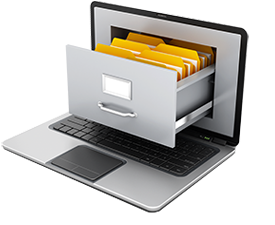Eight ideas to make filing your tax return easier
 Consider these suggestions for helping to make tax season smooth sailing this year for your small business:
Consider these suggestions for helping to make tax season smooth sailing this year for your small business:
- Make your estimated tax payments. Tuesday, January 18th is the due date to make your 4th quarter payment for the 2021 tax year. Now is also the time to create an initial estimate for first quarter 2022 tax payments. The due date for this payment is Monday, April 18.
- Reconcile your bank accounts. Preparing an accurate tax return starts with accurate books. Reconciling your bank accounts is the first step in this process. Consider it the cornerstone on which you build your financials and your tax return. Up-to-date cash accounts will also give you confidence that you’re not over-reporting (or under-reporting!) income on your tax return.
- Organize those nasty credit card statements. If you use credit cards for your business, develop an expense report for these expenditures, if you have not already done so. The report should recap the credit card bill and place the transactions in the correct expense accounts. Attach actual copies of the expenses in the credit card statement. You will need this to support any sales tax paid in case of an audit. Use this exercise to show you are only including business-related expenses by reimbursing your business for any personal use of the card.
- Reconcile accounts payable. One of the first tax deadlines for many businesses is issuing 1099 forms to vendors and contractors at the end of January. Get your accounts payable and cash disbursements up-to-date so you have an accurate account of which vendors you paid.
- Get your information reporting in order. Now identify anyone you paid during the year that will need a 1099. Look for vendors that are not incorporated like consultants or those in the gig economy and don’t forget your attorneys. You will need names, addresses, identification numbers (like Social Security numbers) and amounts billed. Send out W-9s as soon as possible to request missing information.
- File employee-related tax forms. If you have employees, file all necessary W-2 and W-3 forms, along with the applicable federal and state payroll returns (Forms 940 and 941). Do this as soon as possible in January to allow time to identify any potential problems.
- Compile a list of major purchases. Prepare a list of any purchases you made during 2021 that resulted in your business receiving an invoice for $2,500 or more. Once the list is compiled, find detailed invoices that support the purchase and create a fixed asset file. This spending will be needed to determine if you wish to depreciate the purchase over time, take advantage of bonus depreciation, or expense the purchase using code section 179. Your choices create a great tax planning tool.
- Review the impact of COVID-19. There are a number of federal and state initiatives that will need to be considered when filing your 2021 tax return. If you received payroll credits for employee retention or have a Paycheck Protection Program loan that needs to be accounted for this year, be prepared with the details. It will be important to correctly account for these funds.
Here are some ideas to lower your business taxes, get organized, and to prepare for filing your 2021 tax return.
 As 2021 winds down, here are some ideas to consider in order to help manage your small business and prepare for filing your upcoming tax return.
As 2021 winds down, here are some ideas to consider in order to help manage your small business and prepare for filing your upcoming tax return.
- Identify all vendors who require a 1099-MISC and a 1099-NEC. Obtain tax identification numbers (TIN) for each of these vendors.
- Determine if you qualify for the Paycheck Protection Program (PPP) safe harbor threshold that allows you to deduct certain 2020 expenses on your 2021 tax return.
- Consider accelerating income or deferring earnings, based on profit projections.
- Section 179, or bonus depreciation expensing versus traditional depreciation, is a great planning tool. If using Section 179, the qualified assets must be placed in service prior to year-end.
- Business meals are 100% deductible in 2021 if certain qualifications are met. Retain the necessary receipts and documentation that note when the meal took place, who attended and the business purpose of the meal on each receipt.
- Consider any last-minute deductible charitable giving including long-term capital gain stocks.
- Review your inventory for proper counts and remove obsolete or worthless products. Keep track of the obsolete and worthless amounts for a potential tax deduction.
- Set up separate business bank accounts. Co-mingling business and personal expenses in one account is not recommended.
- Create expense reports. Having expense reports with supporting invoices will help substantiate your tax deductions in the event of an audit.
- Organize your records by major categories of income, expenses and fixed assets purchased to make tax return filing easier.
- Review your receivables. Focus on collection activities and review your uncollectable accounts for possible write-offs.
- Make your 2021 fourth-quarter estimated tax payment by January 18, 2022.
 The accounts payable process is typically very labor-intensive for many small business owners. While moving to a paperless environment may help alleviate some of your accounts payable headaches, there will be new problems you’ll have to successfully navigate.
The accounts payable process is typically very labor-intensive for many small business owners. While moving to a paperless environment may help alleviate some of your accounts payable headaches, there will be new problems you’ll have to successfully navigate.
Here are some of the most encountered accounts payable problems and several solutions to consider.
Common problems with accounts payable
- Double payment. A vendor sends you an invoice for $100. Your company promptly pays this vendor $100, but a short time later another payment for $100 goes out to the vendor. Sometimes this can be the fault of the vendor sending an invoice in different ways (i.e. via fax and e-mail). Or the vendor moves to digital invoicing and emails more than one person in your company, effectively duplicating the invoice electronically. Or even worse, you print out a digital invoice twice.
- Vanishing invoices. Your company could get an invoice from a vendor and have that invoice get misplaced, or the invoice accidentally gets destroyed before ever making it into your A/P system. With digital invoices, how do you know which one is the original and which one is a duplicate?
- Sending payment prior to delivery. There are sometimes benefits to paying an invoice as soon as possible. However, if your company pays an invoice before a shipment arrives, that could lead to an awkward conversation with your vendor if any of the shipment arrives with damaged or missing items.
- Matching errors. A manual investigation is often required if a discrepancy is discovered between purchase orders, invoices and other documents. This often happens when multiple invoices are paid with one check, and the breakout of the invoices does not fit on the check stub or other payment documentation. It gets more complicated if your supplier applies payments haphazardly creating a past due account, all while you continue to pay the bills.
What you can do
- Update your internal controls. Have your A/P team help update internal processes and document how invoices should be handled. Pay special attention to separation of duties and full use of purchase orders to ensure invoices are accurate.
- Have one inbox for A/P. All e-mails with invoices should go to one inbox. This will help reduce the chances that an invoice will be received or paid twice. Limit access to this billing address.
- Limit access to cash accounts. It’s more important than ever for someone without authorization to your company’s cash accounts to review bank reconciliations. Not only will this help to potentially uncover erroneous payments, but it could also help to uncover potential fraud that is occurring in your company.
- Track key performance indicators. Create a report each month of all unpaid invoices and another report that shows payments made. Explore bank security features to identify duplicate payments and allows you to control checks that are confirmed for payment. Use your accounting software help identify duplicate dollar amounts and duplicate invoice numbers.
- Be cautious with ACH. Giving a vendor automatic access to your firm’s checking account needs to be tightly controlled. Explore ways to ensure you are reviewing these auto payments on a timely basis and that you are receiving supporting invoicing of these payments.
In late 2020, the IRS announced that it will increase tax audits of small businesses by 50 percent in 2021. Here are several mistakes to avoid if you do get audited by Uncle Sam.
- Mistake: Missing income. A long history of investigating has led IRS auditors to focus on under-reported income. If you’re a business that handles cash, expect greater scrutiny from the IRS. The same is true if you generate miscellaneous income that’s reported to the IRS on 1099 forms. Be proactive by tracking and documenting all income from whatever source. Invoices, sales receipts, profit and loss statements, bank records—all can be used to substantiate income amounts.
- Mistake: Higher than normal business losses. Some small businesses struggle in the early years before becoming profitable. If your company’s bottom line never improves, the IRS may view your enterprise as a hobby and subsequently disallow certain deductions. As a general rule, you must earn a profit in three of the past five years to be considered a legitimate business.
 Mistake: Deductions lacking substantiation. Do you really use your home office exclusively for business? Does your company earn only $50,000 a year but claim charitable donations of $10,000? Do you write off auto expenses for your only car? The key to satisfying auditors is having clear and unequivocal documentation. They want source documents such as mileage logs that match the amount claimed on your tax return and clearly show a business purpose. If you can’t locate a specific record, look for alternative ways to support your tax return filings. In some cases, a vendor or landlord might have copies of pertinent records.
Mistake: Deductions lacking substantiation. Do you really use your home office exclusively for business? Does your company earn only $50,000 a year but claim charitable donations of $10,000? Do you write off auto expenses for your only car? The key to satisfying auditors is having clear and unequivocal documentation. They want source documents such as mileage logs that match the amount claimed on your tax return and clearly show a business purpose. If you can’t locate a specific record, look for alternative ways to support your tax return filings. In some cases, a vendor or landlord might have copies of pertinent records.- Mistake: No expense reports. If you use your credit card for business, create an expense report with account numbers and attach it to each statement. Then attach copies of the bills that support the charges. This is an easy place to blend in personal expenses with business expenses and auditors know it.
- Mistake: No separate books, bank accounts or statements. Never run personal expenses through business accounts and vice versa. Have separate bank accounts and credit cards. A sure sign of asking for trouble is not keeping the business separate from personal accounts and activities.
- Mistake: Treat the auditor as an enemy. Auditors have a job to do, and it’s in your best interest to make their task as painless as possible. Try to maintain an attitude of professional courtesy. If you’re called to their office, show up on time and dress professionally. If they come to your place of business, instruct staff to answer questions honestly and completely.
Tax challenges can be VERY expensive
As a small business owner, you may face the issue of whether to classify workers as employees or as independent contractors.
 Classifying your workers as independent contractors generally saves you money. That’s because you avoid paying employment taxes and benefits on their behalf.
Classifying your workers as independent contractors generally saves you money. That’s because you avoid paying employment taxes and benefits on their behalf.
If the IRS determines that you misclassified your employees as contractors, you could end up paying all of the employment taxes and benefits that would have been paid over the years. Depending on the size of your work force, the cost to your business could be substantial.
In determining whether the person providing a service is an employee or an independent contractor, all information that provides evidence of the degree of control and independence must be considered. There are three primary categories of control and independence that the IRS considers when determining if a worker is a contractor or an employee:
- Behavioral. Does the company control or have the right to control what the worker does and how the worker does his or her job? If yes, the worker is an employee.
- Financial. Are the business aspects of the worker’s job controlled by the payer? This includes things like how the worker is paid, whether expenses are reimbursed and whether the employer provides tools and supplies. If yes, the worker is an employee.
- Type of relationship. Are there written contracts or employee-type benefits? If contracts are involved, the worker may be a contractor. If benefits such as a pension plan, insurance and vacation pay are made available, the worker most likely is an employee.
Deciding whether a worker is a contractor or employee can get complicated. And remember that there are significant financial consequences for incorrectly classifying a worker.
With the onset of COVID-19, small business banks are more nervous about potential loan losses than ever. Here are several tips for your business to maintain a great working relationship with your lender. These same tips can also be used if you want to plant seeds with your banker for potential future loans.
- Produce timely financial statements. Your lender may require you to produce financial statements over the duration of your loans to ensure that you have enough cash to make consistent, on-time payments. Strive to produce up-to-date financial statements and send them to your bank before they ask for them. Not only will timely financial statements make your lenders happy, the pro-active nature of your financials will show a level of transparency to them. Be prepared to include a note explaining major changes and schedule regular phone calls to go over the business.
- Implement solid internal controls. How does a lender have faith that the dollar amounts on your financial statements are accurate? By properly implementing internal controls. You’ll have a happy banker if your company can provide evidence that your internal controls are operating properly.
- Communicate. If your business encounters turbulent financial waters, the best thing to do is immediately let your lender know about it. Better yet, by keeping in constant communication, your lender will most likely be able to spot if your business starts experiencing a downturn and will try devising a plan before you begin missing payment deadlines.
 Remember, your banker probably has their hands full right now. These tips allow them to spend more time on their problem loans, and one of them will not be yours.
Remember, your banker probably has their hands full right now. These tips allow them to spend more time on their problem loans, and one of them will not be yours.
 Small business owners, self-employed workers and freelancers received some welcome news when Congress recently passed the Paycheck Protection Flexibility Act. This new law clarifies how businesses can qualify to have all or a portion of its Paycheck Protection Program (PPP) loan forgiven.
Small business owners, self-employed workers and freelancers received some welcome news when Congress recently passed the Paycheck Protection Flexibility Act. This new law clarifies how businesses can qualify to have all or a portion of its Paycheck Protection Program (PPP) loan forgiven.
Here is what you need to know:
December 31, 2020 is the new deadline to spend loan proceeds. When the PPP program was rolled out this spring, businesses were given 8 weeks after loan funding to use the loan’s proceeds if they wanted to qualify for loan forgiveness. That timeline has now moved to 24 weeks. Due to the extended stay-at-home orders and further assessment of the pandemic, the new deadline is now effectively December 31, 2020.
More loan proceeds can be used for non-payroll expenses. The original law required 75% of loan proceeds to be spent on payroll. For businesses with high cost of goods sold or who had trouble convincing furloughed workers to return to work, hitting this 75% threshold was problematic. The new law reduces the amount of loan proceeds required to be spent on payroll to 60%.
More flexibility in fully restoring workforce. Borrowers now have through December 31, 2020 to restore their workforce levels and wages to the pre-pandemic levels required for full forgiveness. There are three exceptions allowed for not having a fully-restored workforce by Dec. 31. Borrowers can adjust their loan forgiveness calculations because of:
- Employees who turned down good faith offers to be re-hired at the same hours and wages as before the pandemic;
- Difficulty finding qualified employees;
- COVID-19 related operating restrictions
Loan terms extended. For loans that do not qualify for forgiveness, borrowers now have up to five years to repay the loan instead of two. The interest rate remains at 1%. Since your bank has 60 days to process your loan forgiveness application and the SBA has 90 days to process the request, your initial payment is now effectively five to six months after your forgiveness application.
What you need to do
- Download EZ Application Form. If you are a self-employed worker, independent contractor or sole proprietor who has no employees, you may be eligible to use the EZ Loan Forgiveness Application. Click here to download the EZ form. Click here to download instructions for the EZ form.
- Download Regular Application Form. If you aren’t eligible to use the EZ Loan Forgiveness Application, then you’ll need to complete the regular loan forgiveness application. Click here to download the regular application.
- Stay in contact with your lending institution about when and how to complete the loan forgiveness application.
- Consider reaching out to your legislators to let your voice be heard on how you were impacted and to share your story on your PPP loan experience as several U.S. Senators indicated that there will be more changes in the future regarding the program.
The Tax Cuts and Jobs Act (TCJA) was passed by Congress in a hurry late last year, and the IRS has been working to implement the changes for 2018. Here are the latest answers to some of the most common questions about the tax overhaul:

Is home equity interest still deductible? The short answer is: Not unless you’ve used the money to buy, build or substantially improve your home.
Before the TCJA, homeowners were able to take out a home equity loan and spend it on things other than their residence, such as to pay off credit card debt or to finance large consumer purchases. Under the old tax code, they could deduct interest on up to $100,000 of such home equity debt.
The TCJA effectively writes the concept of home equity indebtedness out of the tax code. Now you can only deduct interest on “acquisition indebtedness,” meaning a loan used to buy, build or substantially improve a residence. If you took out a home equity loan pre-2018 and used it for any other purpose, interest on it is no longer deductible.
I’m a small business owner. How do I use the new 20 percent qualified business expense deduction? Short answer: It’s complicated and you should get help.
Certain small businesses structured as sole proprietors, S corporations and partnerships can deduct up to 20 percent of their qualified business income. But that percentage can be reduced after your taxable income reaches $157,500 (or $315,000 as a married couple filing jointly).
The amount of the reduction depends partly on the amount of wages paid and property acquired by your business during the year. Another complicating factor is that certain service industries including health, law, consulting, athletics, financial services and accounting are treated differently.
The IRS is expected to issue more clarification on how these rules are applied, such as when your business is a mix of one of those service industries and some other kind of business.
What are the new rules about dependents and caregiving? There are a few things that have changed regarding dependents and caregiving:
Deductions. Standard deductions are nearly doubled to $12,000 for single filers and $24,000 for married joint filers. The code still says dependents can claim a standard deduction limited to the greater of $1,050 or earned income plus $350.
Kiddie Tax. Unearned income of children under age 19 (or 24 for full-time students) above a threshold of $2,100 is now taxed at a special rate for estates and trusts, rather than the parents’ top tax rate.
Family credit. If you have dependents who aren’t children under age 17 (and thus eligible for the Child Tax Credit), you can now claim $500 for each dependent member of your household for whom you provide more than half of their financial support.
Medical expenses. You can deduct medical expenses higher than 7.5 percent of your adjusted gross income as an itemized deduction. You can claim this for medical expenses you pay for a relative even if they aren’t a dependent (i.e. they live outside your household) as long as you provide more than half of their financial support.
Since you can’t get away from taxes, the best thing to do is be prepared for them. If you own a small business, taxes become a bit more complicated, but there are several ways to make sure tax time is less stressful. Here are tips 3 and 4 for small business owners.
3. Leverage Tax Preparation Tools and Expertise
Most of the personal income tax preparation software applications include business tax options as well and are typically geared for small business or self-employment. The IRS has also gone to great lengths to provide material on its website that is easy to find and understandable by non-tax professionals.
However, tax laws are complex, and it can take time to become proficient. Hiring a tax professional may be in your best interests since this person could identify tax breaks and deductions you may miss.
Whether you use software or hire a pro, keeping a checklist while you are thinking about taxes throughout the year can help you get ready for tax time. There are online and print resources that show you what records and information you need, any tax guidelines geared toward businesses, and the all-important filing and payment dates.
Some things to keep track of include:
- Filing payroll tax forms
- Sending 1099 forms to your contractors
- Assembling income and expense records
- Renewal for liability insurance
You can find tax organizers and worksheets online, or your tax professional may have one for you to use.
4. Avoid These Common Mistakes
There are a couple of mistakes small business owners tend to make that can cause trouble down the road.
- One is thinking your tax professional will assume responsibility for all your tax needs. You cannot assume everything has been done appropriately because, again, you know what they say about “assume.” No matter who prepares the taxes, you are still responsible for all the information on the return and the taxes owed.
- Another mistake is allowing fear of the IRS to keep you from taking legitimate deductions. If you work with a reputable tax professional or online tax preparation service, you should be given appropriate guidance on your eligibility for each available write-off.
There you have it. Keep taxes in mind all year, keep up with changes and news, leverage reputable tax tools and professionals, and avoid common mistakes and your tax time stress should be reduced significantly. As a bonus, you will save yourself some money, and maybe receive a refund.
Since you can’t get away from taxes, the best thing to do is be prepared for them. If you own a small business, taxes become a bit more complicated, but there are several ways to make sure tax time is less stressful. Here are tips 1 and 2 for small business owners.
- Think Taxes Year Around
Thinking about your taxes all year does not seem to be a way to avoid stress, but in reality, tax planning is a year-round activity when you run a small business. If you keep up with documentation and recording requirements throughout the year, you are more likely to arrive at tax time with the right paperwork ready to go.
It is also easier to take advantage of tax savings and deductions over the course of time instead of trying to put together a package of write-offs at the last minute.
- Keep accurate records all year
- Save all business related receipts, both paper and electronic, and log them for easy access
- Keep mileage logs and other expense records so they are accurate
You will find tax time much less stressful, and you will be set up to monitor changes from year to year.
- Keep Up with the Tax News
It may seem that the legislature does nothing, but laws do get passed every year. You need to keep an eye on happenings in the federal government that can impact your tax liability and business organization.
For example:
- The Affordable Care Act is still rolling out. As of 2015 it applied to businesses with 51 to 99 employees and carried stiff penalties for failing to provide health insurance to employees. Penalties also applied if you did not report the type of coverage you provided.
- Taxation of online sales is still winding its way through Congress. You need to monitor the situation, so you know if it becomes law and how it could affect you if you are an online seller if you gross more than $1 million annually.
- The Section 179 Property Deduction was extended but not made permanent. It allows business to deduct the full amount of eligible property as expenses in the year the business began using it. “Property” includes any property used in manufacturing, transporting, and producing goods, any facility used for business or research, or any buildings used to hold livestock or horticultural products.
Tax laws change all the time; keep up with the business news for ongoing legislation or last minute tax breaks.